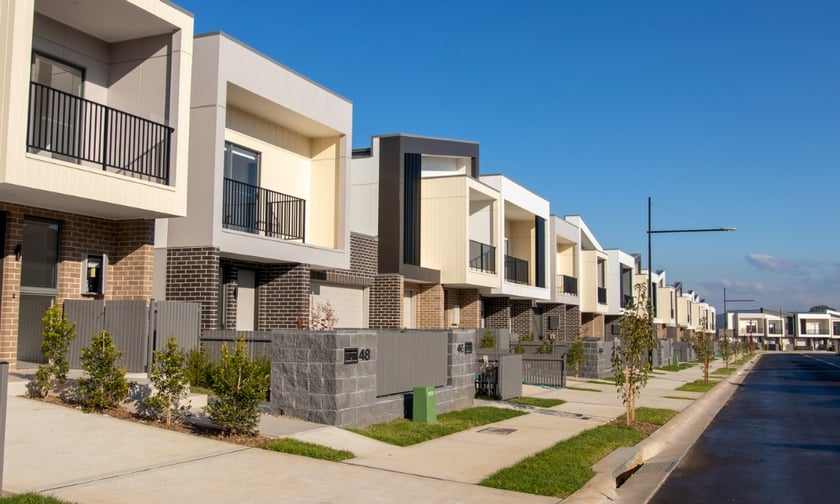

Recent ABS data revealed a concerning decline in housing approvals, exacerbating the housing shortage as construction hurdles continue to mount and putting the federal government’s housing target further out of reach, according to PropTrack.
Housing approvals have plummeted to their lowest level since August 2009, with just 166,401 new dwellings approved in the year to January 2024. This steep decline highlighted the growing disparity between housing demand and the rate at which new projects are being initiated.
“Even more alarmingly, dwelling approvals are typically only the best-case scenario for how many homes are going to get built,” PropTrack said. “Completions are contingent on approvals, but the same is not true in reverse – just because a project is approved to be built doesn’t necessarily mean it goes ahead.”
For the 2022-2023 financial year, ABS estimates indicated the average duration from approval to commencement for houses was slightly less than three months, whereas for townhouses and apartments, it’s generally longer and subject to greater fluctuation.
Significant delays from approval to construction commencement are compounded by a higher than usual rate of approved projects not reaching completion.
“Throughout the past two years, about 17% of approved projects have not resulted in completions,” PropTrack said, indicating a larger drop-off than seen over the past decade, exacerbated by labour and material shortages as well as financing costs.
Despite the federal government’s goal to construct 1.2 million new homes by 2029, current trends suggested this target is increasingly unrealistic. At the present rate, approximately 136,000 homes will be built annually, significantly below the 240,000 homes needed each year to meet the federal target.
“Given the current trajectory, it's unlikely that 1.2 million new homes will be built in the next five years,” PropTrack said. “This means we’re likely to continue to see an undersupply of homes to buy and an undersupply of homes to rent.”
Australia's population growth, outpacing the construction of new housing, further strains the market.
PropTrack said the latest national accounts data showed growth of around 685,000 people in the year to December, intensifying demand pressures and exacerbating affordability issues for renters and buyers alike.
To mitigate the widening gap between housing supply and demand, comprehensive reforms are essential, PropTrack said. These include easing construction capacity constraints, reducing building costs, and addressing planning and approval barriers.
“Increasing the supply of housing is one factor in curbing the decline in affordability that poses challenges for so many,” it said. “Unless we make efforts to boost housing supply, ease construction capacity constraints, and reduce the cost of building new homes, we will continue to see the housing and rental crisis worsen.”
Facing a housing shortage and declining affordability, the current rate of home construction fails to keep pace with population growth, much less achieve expanded targets, PropTrack said.
Get the hottest and freshest mortgage news delivered right into your inbox. Subscribe now to our FREE daily newsletter.
